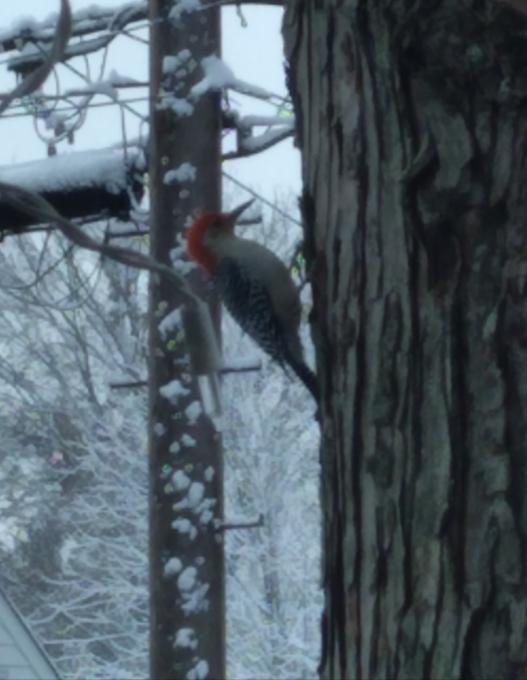The Cornell Lab Bird Academy › Discussion Groups › Joy of Birdwatching › Activities: Exploring Birds
-
 My favorite bird is the pelican. I live near the beach and have seen the brown pelican ,and the American oyster catcher . I enjoy them both
My favorite bird is the pelican. I live near the beach and have seen the brown pelican ,and the American oyster catcher . I enjoy them both
-
We live in NYS, two hours north of NYC. My husband took these images of the lovely cardinal couple that visits our feeders and plays in the snow.


-
i am very envious of these two shots! i have been taking cardinal picks from my desk and its hard to get them so close together!! and that snow covered beak!!! Print them out!!
-
-
Which group is a house crow in? It seemed like it was in songbirds, but that didn't make too much sense to me.
-
ElizabethBird AcademyYes, it may seem surprising but crows are in fact Passeriformes, or songbirds.
-
-
Activity 1: My favorite birds from the Wall of Birds are the Wood Duck, Blue-footed Booby and Shoebill. Activity 2: In my backyard I often found Sparrows, Hummingbirds and White-winged Doves, sometimes Blackbirds that I’m not able to identify yet. I live in Monterrey, Nuevo Leon, Mexico.

 Activity 3: Hummingbirds, they are my favorite because of their pretty shades of green and the way they fly around.
Activity 3: Hummingbirds, they are my favorite because of their pretty shades of green and the way they fly around. -
Activity 3: I live in a suburb of Vancouver, British Columbia, and one of my favourite backyard visitors is the pileated woodpecker. I've learned this guy is a male -- you can tell by his red moustache. Activity 2: I've been taking long walks along an urban lake and have been working on identifying all the different water birds. My favourite there was a Canada Goose, not because it was a Canada Goose but because it did "summersaults" in the water. It would suddenly pitch its head forward into the water and flip completely upside down, then did some crazy kicks to complete the roll and bring its head back up, swam a bit, and then did it all over again.

-
 I've often encountered a Black-crowned Night Heron through binoculars on the far side of a pond. But this time, one just sidled up to me in an outdoor restaurant in Mission Bay, San Diego, CA.
I've often encountered a Black-crowned Night Heron through binoculars on the far side of a pond. But this time, one just sidled up to me in an outdoor restaurant in Mission Bay, San Diego, CA. -
Three birds that frequent my garden feeders here in Colorado are: House Finches- which are a type of finch, they will spend a long time sitting on the feeder sorting through seeds and other bits. Dark eyed juncos- which are a type of sparrow, they go on the ground under the feeder while the other birds feed clearing up the fallen rejected seeds and nuts. Chickadee- I'm not sure what type a chickadee is... but it seems to fit the behaviour of a flycatcher as it darts back and forth from feeder to branch, but it feeds on nuts and seeds rather than insects from what I can see soooo......?
-
 On cold winter days I find myself looking through my photos from last summer. I had a blast watching this American Goldfinch feeding her young. I can’t wait till spring!! Another highlight was the family of 5 Ruby-throated Hummingbirds. Hope to see them all soon!!
On cold winter days I find myself looking through my photos from last summer. I had a blast watching this American Goldfinch feeding her young. I can’t wait till spring!! Another highlight was the family of 5 Ruby-throated Hummingbirds. Hope to see them all soon!!
-
I believe that is a male Goldfinch. The Female is not so bright yellow. In winter he will look olive drab. Here along the Gulf Coast of Mississippi I saw these birds every year and could not identify them. Seems all my field guides only showed goldfinches in their bright yellow breeding colors. Theresa
-
 This beautiful bird sits in the trees in our backyard every evening.
This beautiful bird sits in the trees in our backyard every evening. -
Activity 2: The feeders in my Kansas City area patio attract several varieties that I see regularly. Doves often come in flocks of 4 to 10. The cute Carolina Wrens (songbirds) in singles or sometimes twos -- look the same, not sure of male/female. And for woodpeckers, the Downy, Northern Flicker, and the Red Breasted. I even got one photo through the kitchen blinds showing both a Flicker and Red Breasted on the same suet feeder -- that was cool.

-
On our bird walk this morning, my 4yo and I spotted two blue jays, a few european starlings, and a ton of house sparrows. My daughter love spotting the birds with me and often sees ones I miss. I'm currently using Merlin Bird ID and sometimes do some more online research if I'm not quite sure it fits what the app finds. I am looking into a book guide to supplement and have on hand.
-
I have always used the Petersen guide, but I would also like to check out the Sibley as I get more into identifying different birds. It is wonderful that you are exploring birds with your daughter. My two adult daughters and I are doing this course "together". They are in CO and I am in NH.
-
-
 Birds bring me so much joy and there are so many just outside my window. I would like to improve my bird identification. This raptor is an immature Bald Eagle I think. I use the Merlin app and my bird book. It is the "transitional" birds due to the changes with age and season that really challenge me
Birds bring me so much joy and there are so many just outside my window. I would like to improve my bird identification. This raptor is an immature Bald Eagle I think. I use the Merlin app and my bird book. It is the "transitional" birds due to the changes with age and season that really challenge me -
 Here's my first scarlet tanager I spotted last summer in Newbury, MA. He was on the lowest tree branch and stayed nice and still for photos! Being bright red in New England made identification faster (I have mostly been using the Audubon app).
Here's my first scarlet tanager I spotted last summer in Newbury, MA. He was on the lowest tree branch and stayed nice and still for photos! Being bright red in New England made identification faster (I have mostly been using the Audubon app). -
Beautiful, I enjoy the beak detail in this picture.
-
-
 This is a red-golden pheasant in a local park in New Orleans. I was using the Audubon app for identification, but it wasn't in there. The reason being that this bird is not endemic to Louisiana! He was most likely abandoned or escaped from a coop. He's been in the park for years though and has become a bit of a legend!
This is a red-golden pheasant in a local park in New Orleans. I was using the Audubon app for identification, but it wasn't in there. The reason being that this bird is not endemic to Louisiana! He was most likely abandoned or escaped from a coop. He's been in the park for years though and has become a bit of a legend! -
He looks like he was on the move!
-
-
I am looking forward to completing this course and another that my daughter bought for me for Christmas. Living in TN, I am very fortunate to be able to see from my kitchen window many different songbirds at my feeders; geese, ducks and cranes in my neighbors lake and a Coopers Hawk that roams the area. Now I need to buy a guide to take with me for my walks in the woods.
-
Used Merlin app to identify Hairy Woodpecker and dark eyed Junco on my feeder
-
Activity 1 - Favorite bird from the wall of birds is a Great Grey Owl. I was fortunate to see one of these with my father, who is a much more accomplished birder than I, when I was in my teens. Just the massive size of this bird is incredible. The second striking feature are its eyes. Unlike many owls, they are quite adapted to hunting in the daytime. Despite the one we saw being hundred yards away, when seen through even basic binoculars it felt like it was staring into your soul. Runner up has to be the Kakapo, or flightless parrot of New Zealand. Their incredible camouflage blends in so well to the moss covered grounds of the rainforest like locations where they live. Activity 2 - The first bird, which will also be my photo bird is the Black-capped chickadee, one of the very common feeder/backyard birds in our area. For a bird smaller even than a sparrow they have the bravery of a lion. The often will scold the owner of the feeder should they let the feeder become empty, waiting directly nearby as you fill it. They remind me of a smaller version of a banty rooster. They are in the family Songbids. Another common feeder bird here is the Hairy Woodpecker, which is in the woodpecker family. The third is the Eastern wild turkey, which is the chicken like bird group.

-
 unfortunately through my screen but i was very pleasantly surprised by this pileated woodpecker at my suet feeder
unfortunately through my screen but i was very pleasantly surprised by this pileated woodpecker at my suet feeder -
Activity 2: i regularly see white and red breasted nuthatches, mourning doves & various woodpeckers and many many more types Activity 3: I just love chickadees!
-
Activity 1 : The secretary bird will always catch my eye after its introduction to me in the movie, Kung Fu Panda. It's an elegant, powerful, and beautiful bird. This bird can make snakes it lunch with its fatal kicks. That's one of the main reasons it catched my eye. Activity 2: 3 different groups of birds. I was able to identify a mocking bird ( usually present in my front yard), a red-bellied woodpecker ( always a beautiful sight), and a dark moth raptor (!! I saw a fast-flying bird swoop into a tree in a round-about and sneaked up on it; I noticed it had a sharp hooked beak and got excited). These are my three species. They have given me a lot of joy and I hope I keep discovering more neighborhood friends. Activity 3: Recalling back to Activity 2, the dark morph raptor has come into my life with so much mystery and "carnivore-y" that I want to be able to spot it again. Its sharp beak and proud posture created such an image in my mind. I took a picture of this mystery but it was on my low pixel android phone. Wish me luck on my journey to identify this bird!
-
 This is the Clark's Nutcracker. He loves and brutalizes our suet, dumping all of our seed from feeders onto the ground. I guess they are ground feeders or are they just too big to stably feed from the feeders? We do know they like the seeds from pinecones. Our online field guide says they like to make cache's of seed and can become accustomed to humans. They are certainly comfortable around our feeders and dominate the scene along with the blue & gray jays and woodpeckers. The Nutcracker will call others to come to feed! The little birds wait for the nutcracker to fly off before they come back to feed. We live in the Colorado Rockies.
This is the Clark's Nutcracker. He loves and brutalizes our suet, dumping all of our seed from feeders onto the ground. I guess they are ground feeders or are they just too big to stably feed from the feeders? We do know they like the seeds from pinecones. Our online field guide says they like to make cache's of seed and can become accustomed to humans. They are certainly comfortable around our feeders and dominate the scene along with the blue & gray jays and woodpeckers. The Nutcracker will call others to come to feed! The little birds wait for the nutcracker to fly off before they come back to feed. We live in the Colorado Rockies.
-
This morning I looked out my front door just in time to see one of my favorites, the Red-Bellied Woodpecker.

-
I have one visiting in my yard this year for the first time. I usually have downy, hairy and the occasional pileated so I was thrilled to have another type!
-
-
I have tried to identify birds with the Merlin app, but the app has not worked for me. In my experience the app cycles through the same few birds, or suggests birds that are very out of place, such as wading birds when I am looking at birds in a field. I'm taking this course so that I can more intelligently use the Merlin app and printed bird guides. Like others here I became focused on birding while walking during this pandemic. I noticed subtle colors and varieties on birds that I hadn't seen before. I live in northern California.
-
I enjoy watching birds in my backyard. I started feeding them and noticed that not every bird is a sparrow! One feeder lead to another and now I have a squirrel proof pole system with multiple feeders to attract a variety of birds. At this time I am seeing gold finches, house finches, chickadees, northern cardinals, titmouse, white breasted nuthatches, Carolina wrens, sparrows, downy woodpeckers, and red bellied woodpeckers. My most recent new sighting was a flock of Pine siskins that we saw for about a week. Occasionally we have hawks visit - I believe Cooper Hawks. I was lucky enough to visit Bar Harbor, Maine and Acadia National Park (spring of 2019) and attended a birding event. I was amazed with the experience. I loved seeing warblers and the ocean birds - especially the Puffins. Now that we are not traveling; I hope doing these activities will help me increase my bird knowledge and give me a distraction from the crazy times we are experiencing.
-
Activity 1: A few of my favorite birds from the Wall of Birds are the Yellow-Billed Magpie, Shoebill, and Great Gray Owl. The reason I like each of these birds is due to their unique physical attributes. Activity 2: A few birds that I observed outside which I was able to narrow down to one group are: Mourning Doves belonging to the pigeons and doves, Black Phoebes belonging to the songbird subcategory of flycatchers, and Red-tailed Hawks belonging to the raptors. Activity 3: One of my favorite birds in my neighborhood is the Northern Mockingbird. It is a medium-sized grey songbird with white on its wings, thin black legs, light-colored yellowish eyes, and a very impressive long tail! The reason it is one my favorite local birds is due to an experience I had with this particular species when I first moved into my current home. It had been late last winter and I had just laid down in bed after a tiring day of shuffling boxes. As I started to close my eyes, a loud intriguing noise struck my ears. Was that a car alarm I heard? No, that’s not it. As the song continued, I realized it was taking on different tunes. At one moment it sounded like a typical songbird, another a harsh almost mechanical sound. However, what surprised me most was the noise kept on going and going. I was very confused but fascinated at the same time. Whatever was making these sounds sure had stamina. My curiosity in the end got the better of me and coaxed me out of bed to go rummaging for a local bird guide I had safely tucked away in a thankfully clearly labeled box. With the help of my trusty guide, I discovered this singing prodigy was no other than the Northern Mockingbird and that during nesting season they can sing throughout the night! With the satisfaction of successfully identifying this lovelorn avian, I went back to bed and let its quirky song put me to sleep like a lullaby. Now whenever I hear a Northern Mockingbird it makes me reminisce about that night.
Read More:
 My favorite bird is the pelican. I live near the beach and have seen the brown pelican ,and the American oyster catcher . I enjoy them both
My favorite bird is the pelican. I live near the beach and have seen the brown pelican ,and the American oyster catcher . I enjoy them both



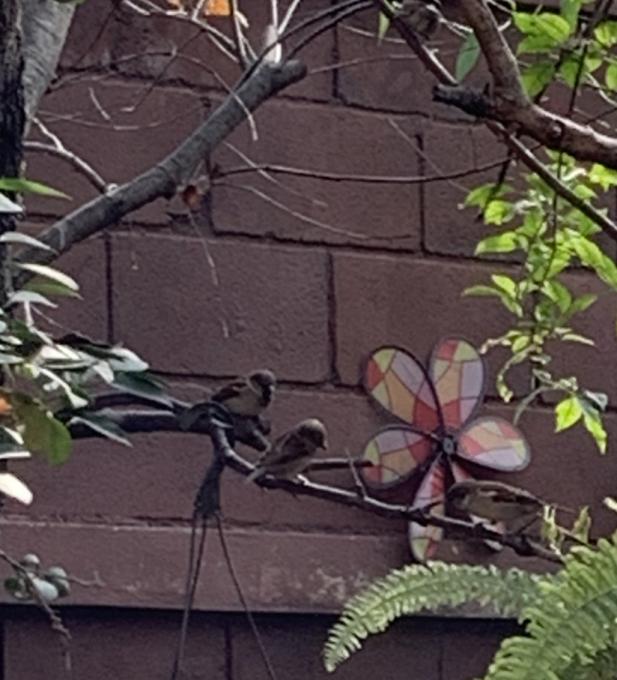 Activity 3: Hummingbirds, they are my favorite because of their pretty shades of green and the way they fly around.
Activity 3: Hummingbirds, they are my favorite because of their pretty shades of green and the way they fly around. 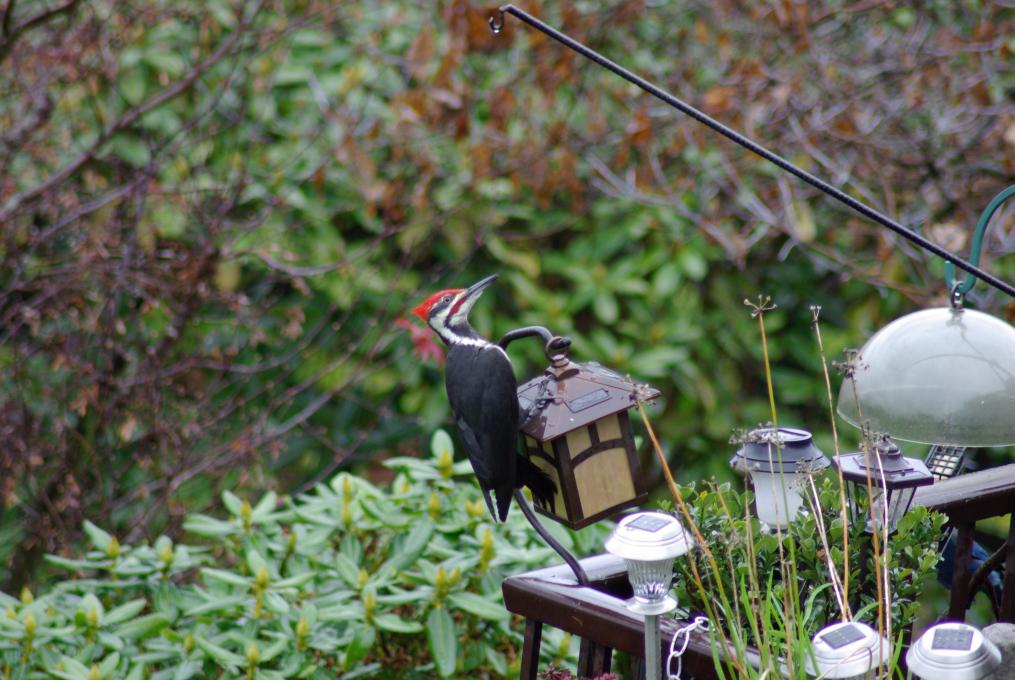
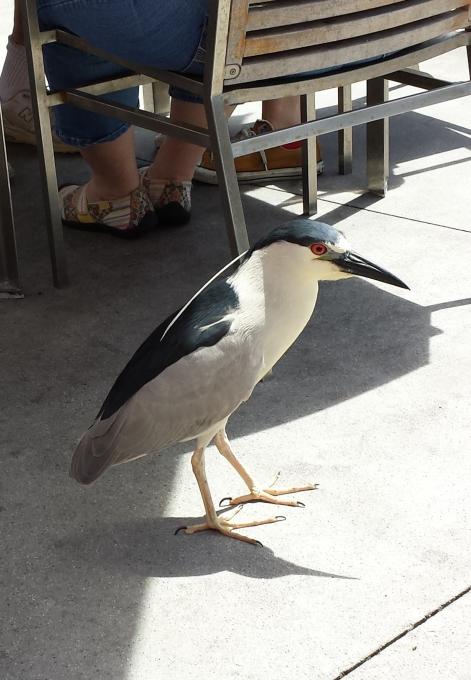 I've often encountered a Black-crowned Night Heron through binoculars on the far side of a pond. But this time, one just sidled up to me in an outdoor restaurant in Mission Bay, San Diego, CA.
I've often encountered a Black-crowned Night Heron through binoculars on the far side of a pond. But this time, one just sidled up to me in an outdoor restaurant in Mission Bay, San Diego, CA.  On cold winter days I find myself looking through my photos from last summer. I had a blast watching this American Goldfinch feeding her young. I can’t wait till spring!! Another highlight was the family of 5 Ruby-throated Hummingbirds. Hope to see them all soon!!
On cold winter days I find myself looking through my photos from last summer. I had a blast watching this American Goldfinch feeding her young. I can’t wait till spring!! Another highlight was the family of 5 Ruby-throated Hummingbirds. Hope to see them all soon!!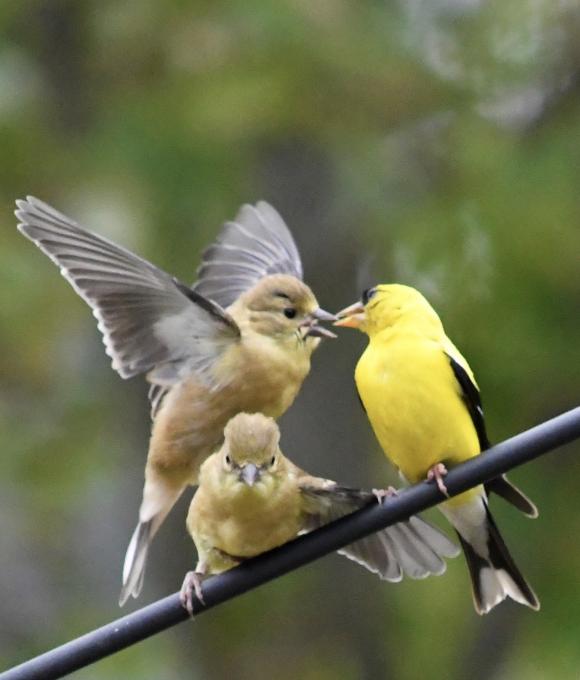
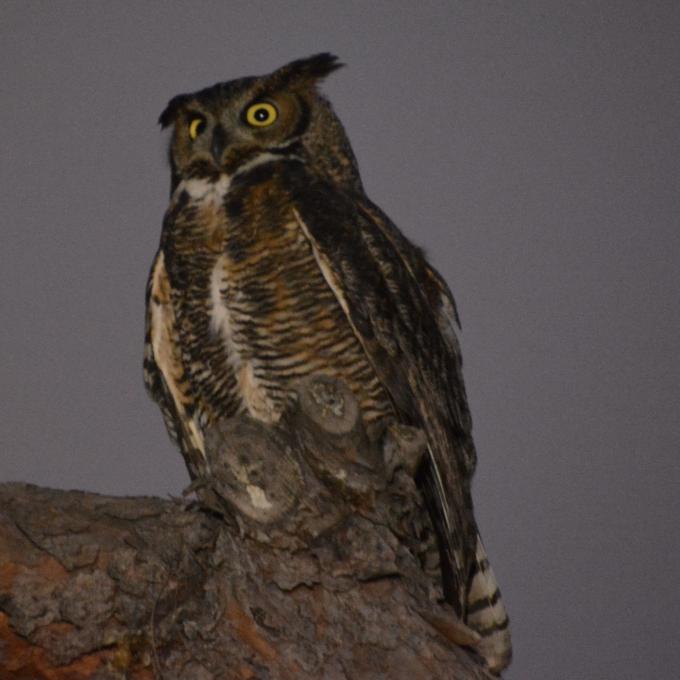 This beautiful bird sits in the trees in our backyard every evening.
This beautiful bird sits in the trees in our backyard every evening. 
 Birds bring me so much joy and there are so many just outside my window. I would like to improve my bird identification. This raptor is an immature Bald Eagle I think. I use the Merlin app and my bird book. It is the "transitional" birds due to the changes with age and season that really challenge me
Birds bring me so much joy and there are so many just outside my window. I would like to improve my bird identification. This raptor is an immature Bald Eagle I think. I use the Merlin app and my bird book. It is the "transitional" birds due to the changes with age and season that really challenge me 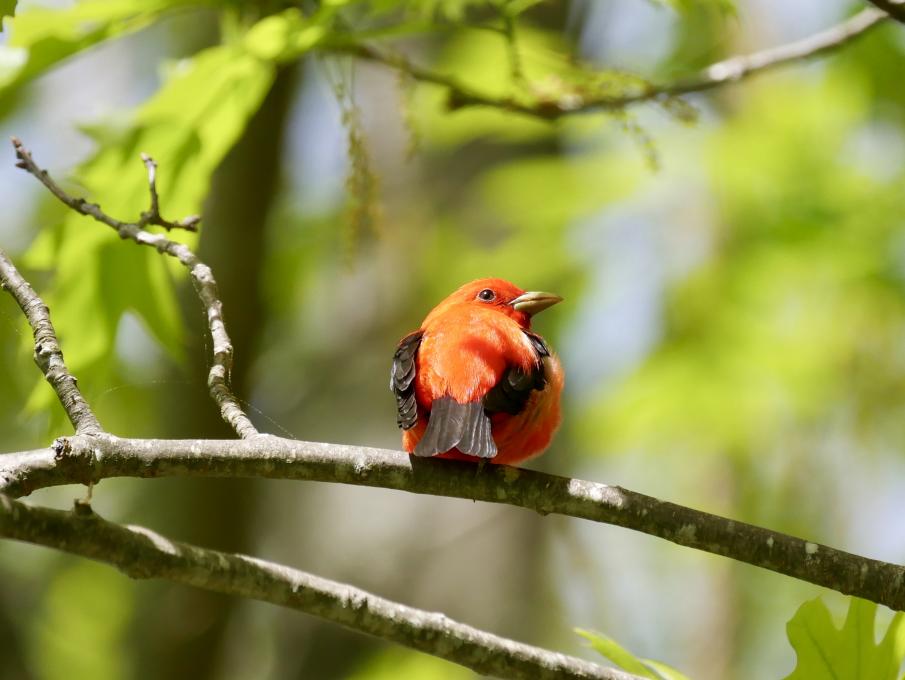 Here's my first scarlet tanager I spotted last summer in Newbury, MA. He was on the lowest tree branch and stayed nice and still for photos! Being bright red in New England made identification faster (I have mostly been using the Audubon app).
Here's my first scarlet tanager I spotted last summer in Newbury, MA. He was on the lowest tree branch and stayed nice and still for photos! Being bright red in New England made identification faster (I have mostly been using the Audubon app). 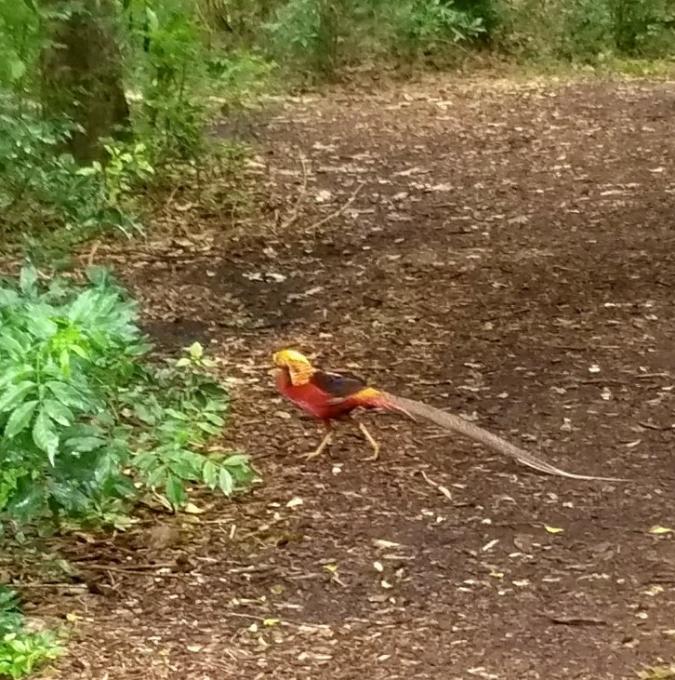 This is a red-golden pheasant in a local park in New Orleans. I was using the Audubon app for identification, but it wasn't in there. The reason being that this bird is not endemic to Louisiana! He was most likely abandoned or escaped from a coop. He's been in the park for years though and has become a bit of a legend!
This is a red-golden pheasant in a local park in New Orleans. I was using the Audubon app for identification, but it wasn't in there. The reason being that this bird is not endemic to Louisiana! He was most likely abandoned or escaped from a coop. He's been in the park for years though and has become a bit of a legend! 
 unfortunately through my screen but i was very pleasantly surprised by this pileated woodpecker at my suet feeder
unfortunately through my screen but i was very pleasantly surprised by this pileated woodpecker at my suet feeder 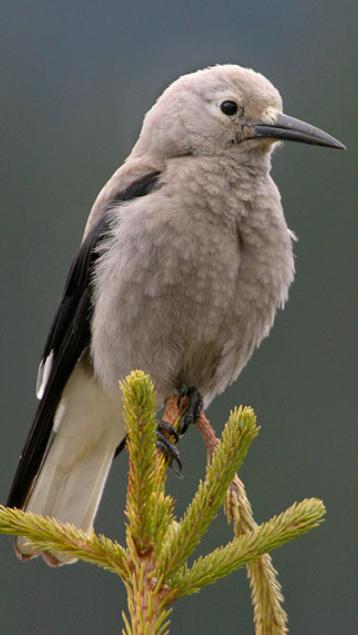 This is the Clark's Nutcracker. He loves and brutalizes our suet, dumping all of our seed from feeders onto the ground. I guess they are ground feeders or are they just too big to stably feed from the feeders? We do know they like the seeds from pinecones. Our online field guide says they like to make cache's of seed and can become accustomed to humans. They are certainly comfortable around our feeders and dominate the scene along with the blue & gray jays and woodpeckers. The Nutcracker will call others to come to feed! The little birds wait for the nutcracker to fly off before they come back to feed. We live in the Colorado Rockies.
This is the Clark's Nutcracker. He loves and brutalizes our suet, dumping all of our seed from feeders onto the ground. I guess they are ground feeders or are they just too big to stably feed from the feeders? We do know they like the seeds from pinecones. Our online field guide says they like to make cache's of seed and can become accustomed to humans. They are certainly comfortable around our feeders and dominate the scene along with the blue & gray jays and woodpeckers. The Nutcracker will call others to come to feed! The little birds wait for the nutcracker to fly off before they come back to feed. We live in the Colorado Rockies.
